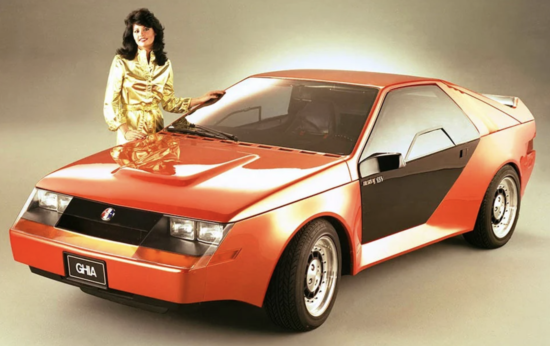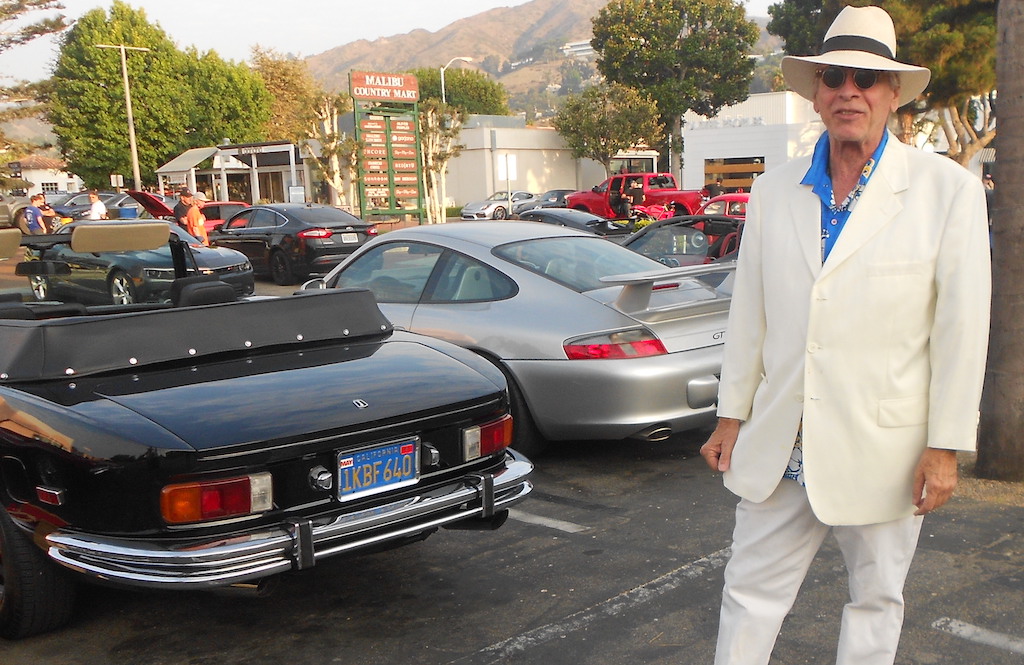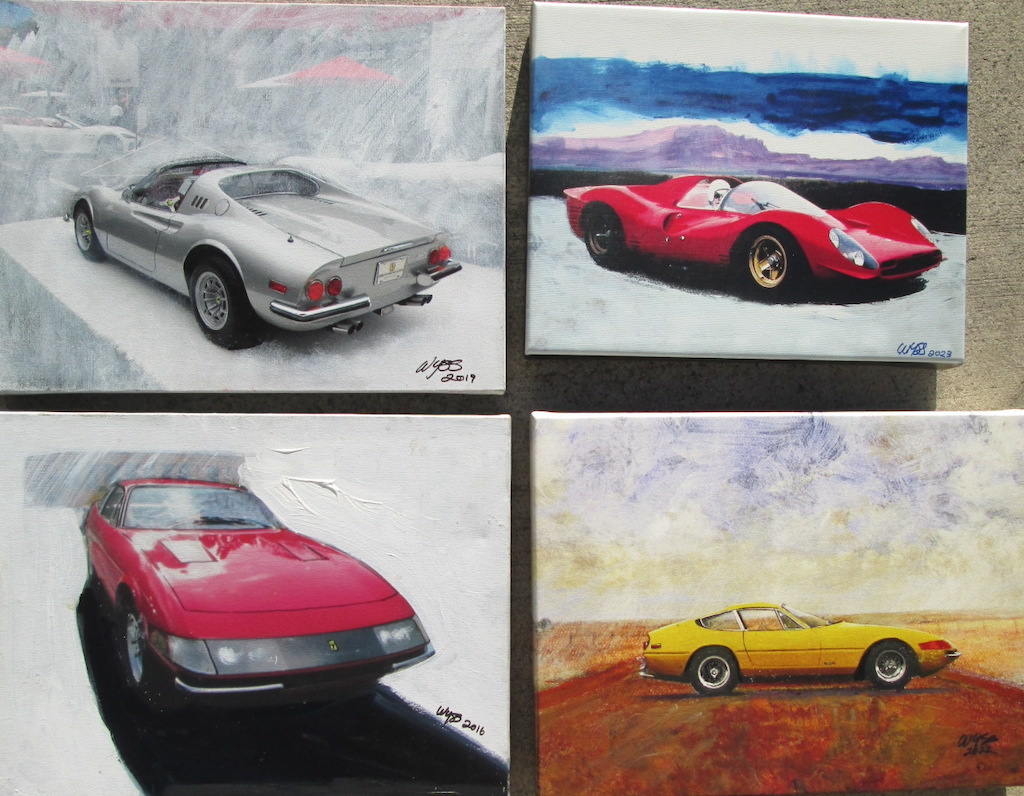by Wallace Wyss –
Car companies make mistakes. To me, one of the dumbest moves Ford did in recent decades was to let go of the hallowed name of a famous carrozzeria (coachbuilder) they had bought degrades ago, namely Ghia.
Carrozzeria Ghia SpA was established 1915 in Turin by Giacinto Ghia and Gariglio as Carrozzeria Ghia & Gariglio, located in Turin. The company initially made lightweight aluminum-bodied cars, the first to reach fame being the Alfa Romeo 6C 1500, which won the Mille Miglia in 1929. Between the world wars, they were known for doing special custom or limited production bodies for Alfa Romeo, Fiat and Lancia. During the Second World War, they kept a roof over their heads by making carts for the Italian Army and by making bicycles.
In 1943 they lost that roof during an Allied bombing raid. The loss of his buildings and all of the tooling and designs built up over more than a quarter of a century was too much for Ghia, and, on 21 February 1944 he died from a heart attack. Determined that the family name would continue, Santina Ghia offered what was left of her husband’s company to two of his closest associates, Giorgio Alberti and Felice Mario Boano, the latter already having been chosen as a successor by Ghia before his death.
With Luigi Segre on his side, Boano saw success with many foreign firms ordering Ghia designs, such as Ford, Volkswagen and Volvo. Chrysler and Virgil Exner, the tasteful Chrysler designer, became a close partner for 15 years, resulting in eighteen Chrysler Ghia Specials (1951-53). There is also a number of Ghia-bodied Ferraris. Production by Ghia was always in very low numbers, giving the company’s products great exclusivity.
In 1953, Boano left for Fiat, the factory moved to via Agostino da Montefeltro, and Luigi Segre took over. Ghia then bought Pietro Frua, a rival coachbuilder, appointing Frua as head of Ghia Design (1957-60). After Segre’s death (1963), Ghia was sold to Ramfis Trujillo (1966), who sold it to Alejandro de Tomaso (1967), who took over, but had difficulty in running Ghia profitably. In 1970, he sold his shares off to the Ford Motor Company.
During this period, Ghia’s in house designer Tom Tjaarda designed the De Tomaso Pantera and had the Ghia badge put on the fender though the body was built by Vignale (starting the first lie). There were dozens of prototypes built by Ghia for Ford but gradually Ford got down to using the name Ghia to designate models with fancier interiors. The name “Ghia” was gradually watered down so much that to see the Ghia name on a car didn’t mean “designed by Ghia” anymore. Finally it was just a name applied to fancier interiors in Ford’s top-line models.
I suggest Ford re-activate the name Ghia by re-opening a design studio on Lake Como, site of many a famous concours. I want to see new concept cars with at least the interior designed by Ghia. I want to see the thousand years of design expertise in Italy be applicable to an American cars.

Created at the Italian Ghia design studio, the Ford RSX was conceived as a rally special based on the new Fox-body third-generation Mustang that debuted for the 1979 model year. With a one-inch-wider track and 5.6-inch-shorter wheelbase than the road-going Mustang, the RSX had extra ride height that would be needed for dealing with the off-tarmac stages of European rallies. It isn’t a great design but hey, at least then they could see what the Italians had to say…
To me, it’s jingoistic if, when this idea is proposed Stateside, an American would respond with: “Why do we need them? Isn’t American design good enough for you?” My answer is that Italy has a much longer tradition of design–when Davy Crockett (or whoever) was wearing buckskins and fighting his way to the West, over in Italy there were already fine tailors and furniture makers and architects. I have been myself to shops in Italy that, if you look at the sign over their door showing when they first hung up their shingle, were started in the 1700s!
The auto business is, aesthetically, in a sense, the fashion business too. If you want to see a product designed by a Socialist state to just deliver people from Point A to Point B that’s the Trabant. When the East Germans were allowed to come to West Germany the owners threw those cardboard cars away. (The Trabants were a series of small cars produced from 1957 to 1991 by former East German car manufacturer VEB Sachsenring Automobilwerke Zwickau. Hence, the Trabant became a worldwide symbol of the stagnant economy of former East Germany and the collapse of the Eastern Bloc in general. )
An automaker in a capitalistic society needs to go the other way as much as possible so a motivation to buy a new car can be partly based on how much style it can deliver. So I figure Ford already owns the name Ghia, why not exploit it, bring it back and have some prototypes made in Italy?
Let us know what you think in the Comments.
THE AUTHOR: Wallace Wyss is the author of 18 car histories. He has been a guest lecturer in Transportation Design at the Art Center College of Design.





Wallace: The US Automakers have always had a “not invented here” attitude when the question of hiring outsiders such as Pininfarina, Ghia and Ital Design to help out. While we’ve had some very talented designers post war (and some real good ones pre) who have created some great cars (early Corvettes, the slab-sided Lincoln Continentals of the early 1960s) the same folks have also produced some horrible designs. Over here, marketing, sales and accounting have a tremendous say in what eventually gets produced. Especially in the last 20 years (pause to vomit over the Pontiac Aztek). There has been a lot of “in-breeding” in our industry that has resulted in these awful concoctions being thrust on the public.
If our folks were smart. they’d look to the carrozzerie as a sounding board as well as a source for new ideas, free from the corporate politics that dominate our business so much.
I agree wholeheartedly. The current Corvette is an example.
Wise to go mid engined.
But the whole car has little styling gimmicks that were each the result of an individual battle–Joes’ taillights, Marty’s side vent, etc. whereas a European carrozzeria could render their opinion free of politics. But in the case of the Allante, even though Pininfarina was supposed to design it without GM Design influencing them Chuck Jordan told me he got to look at it and deliver his opinion which no doubt crippled the intention of a purely Italian European design.